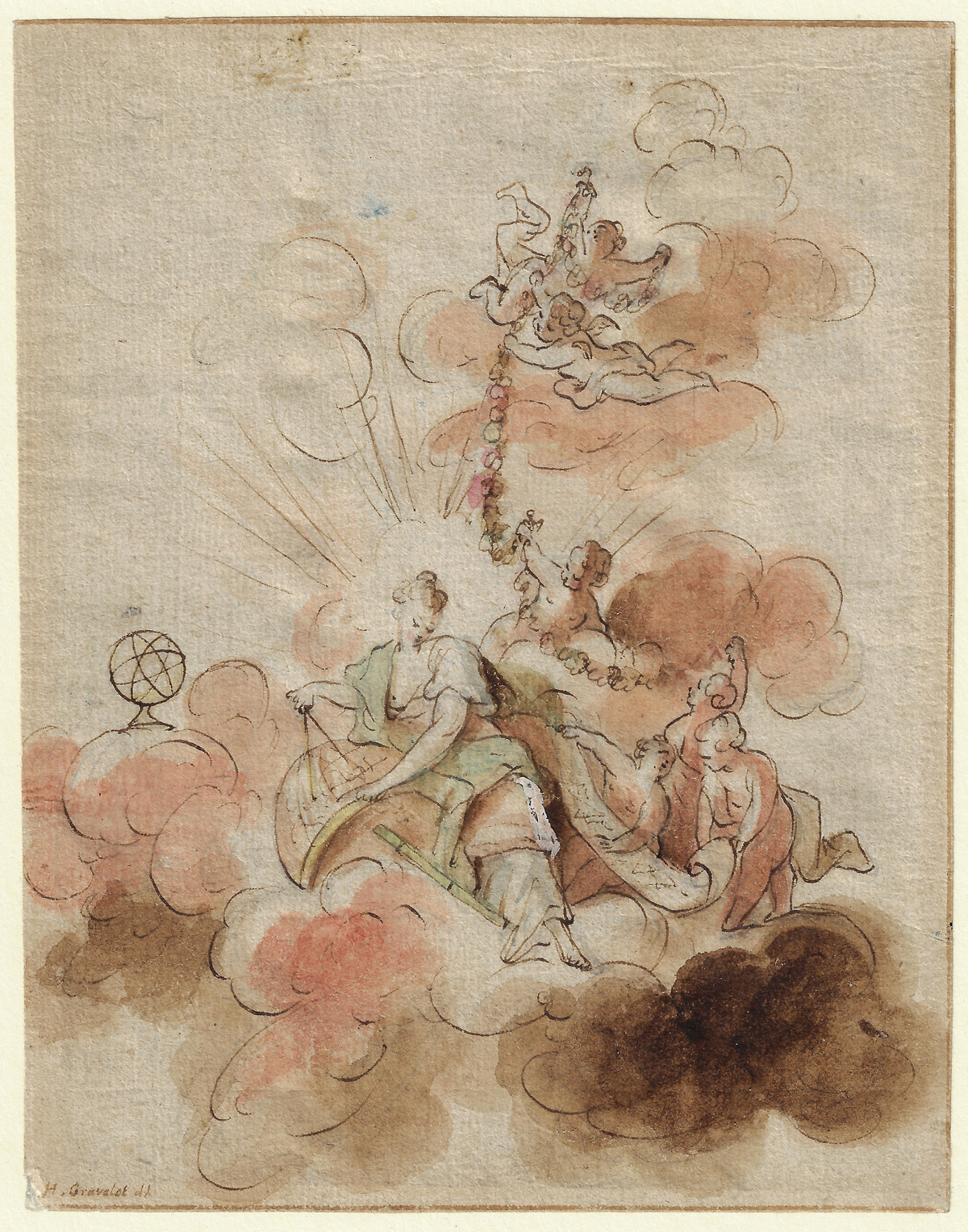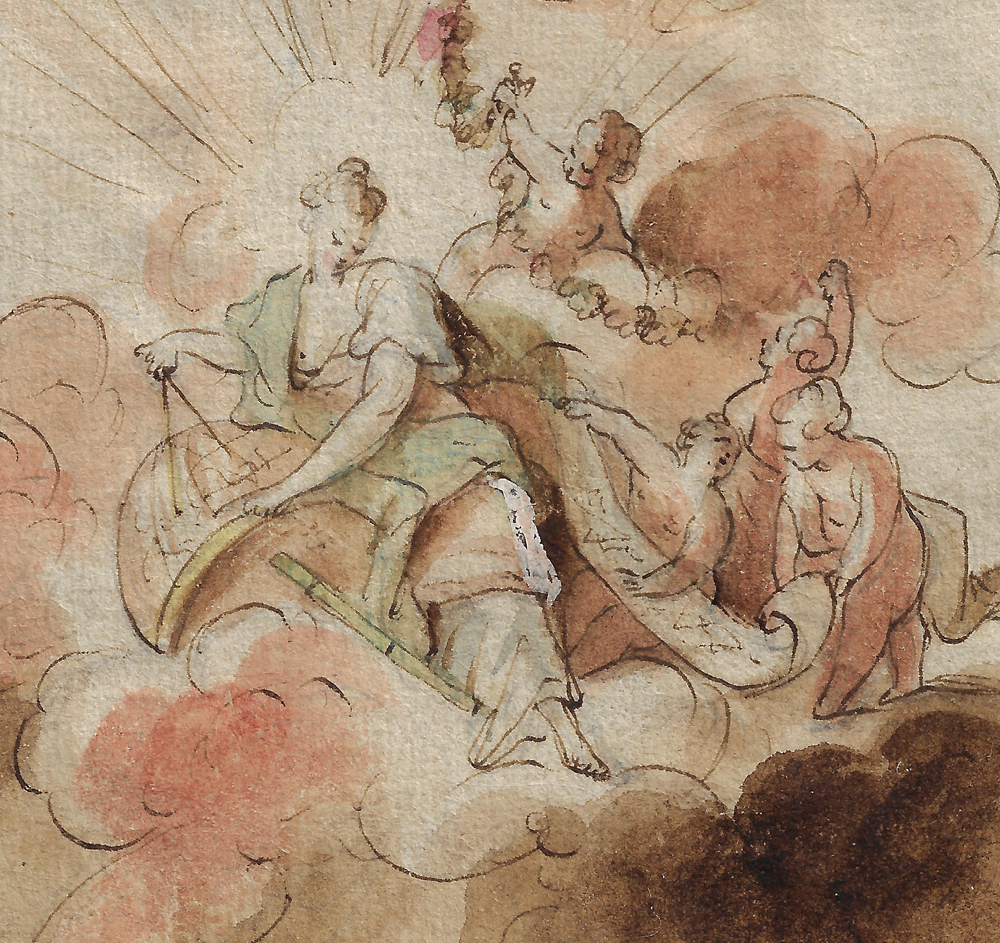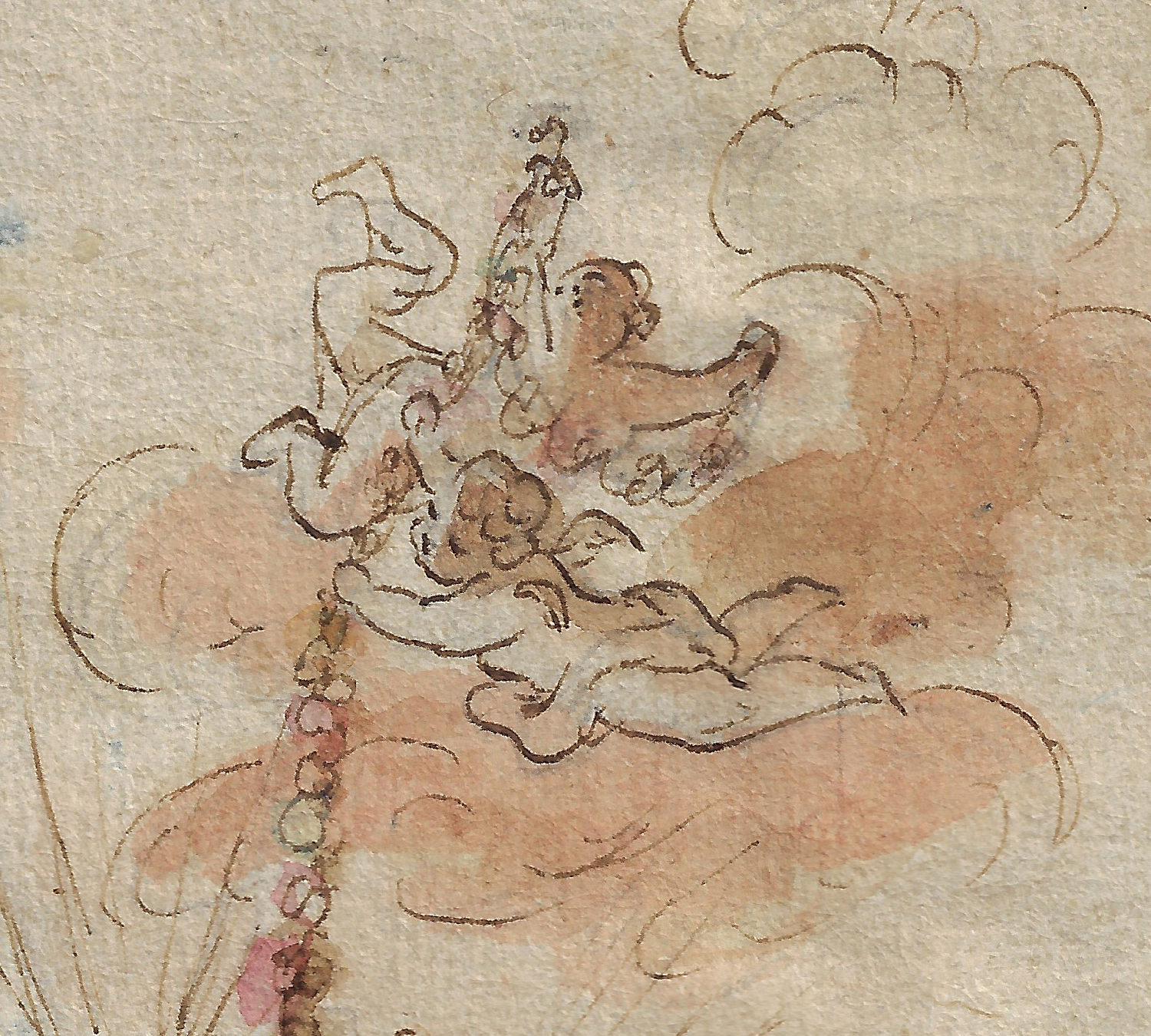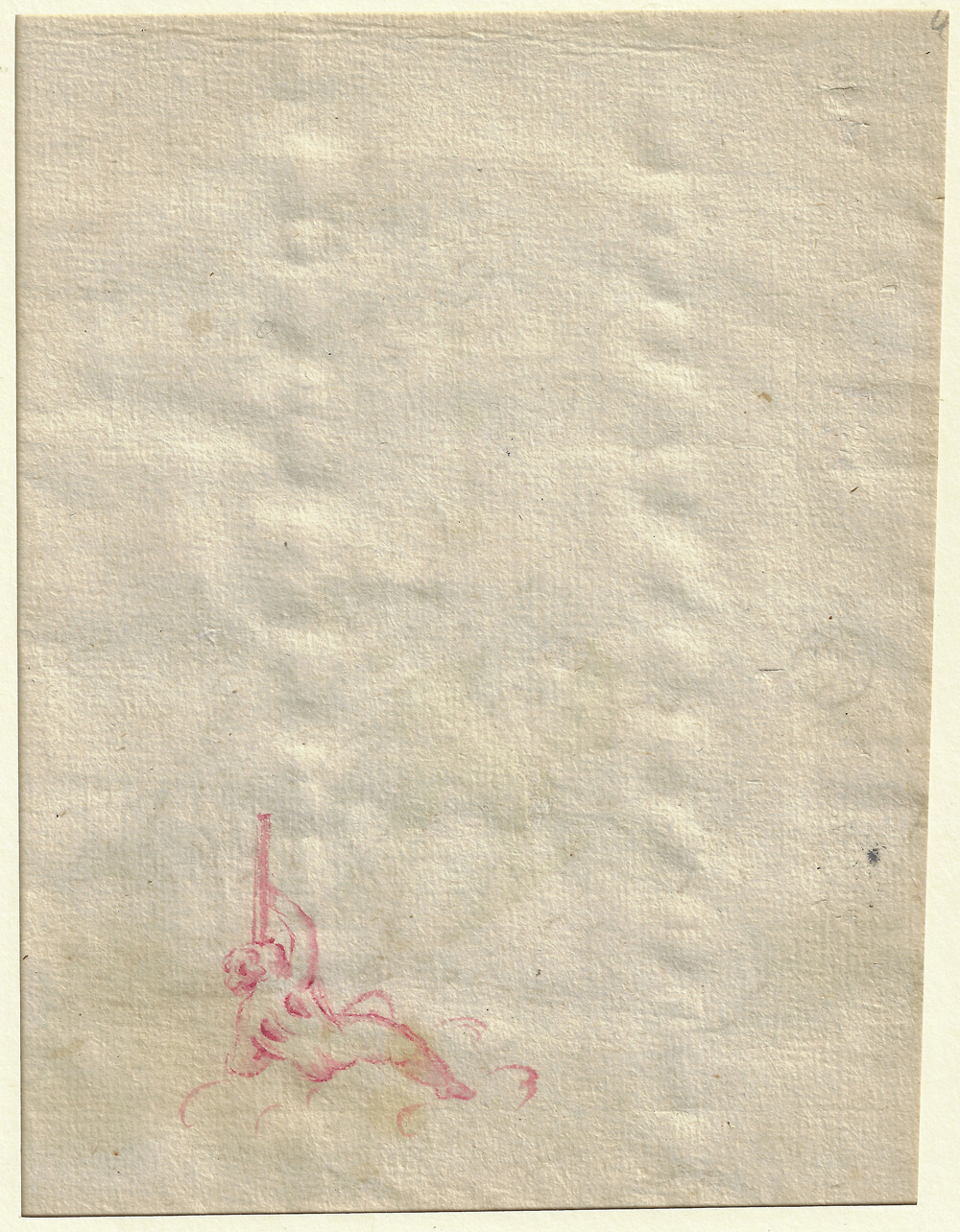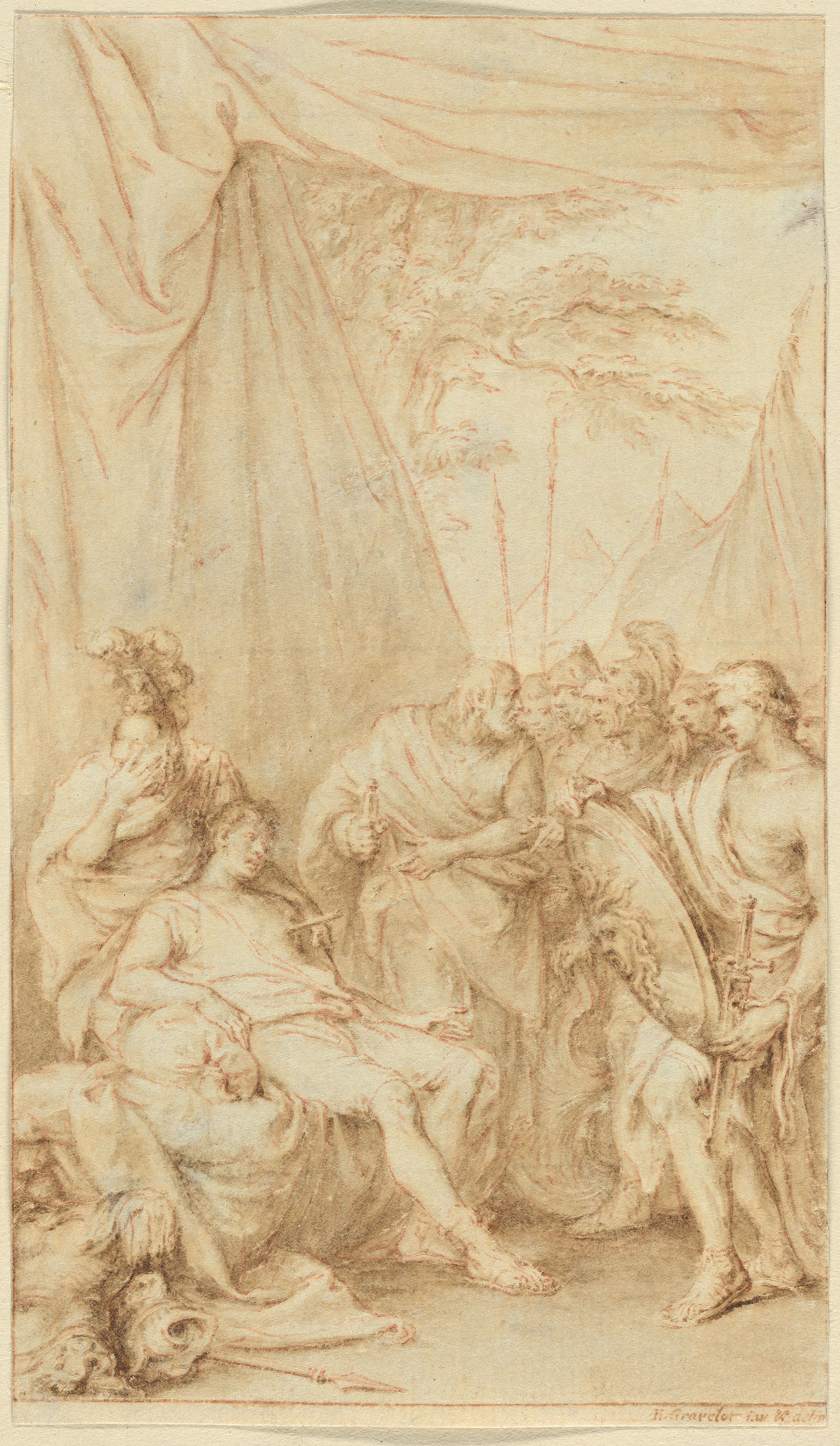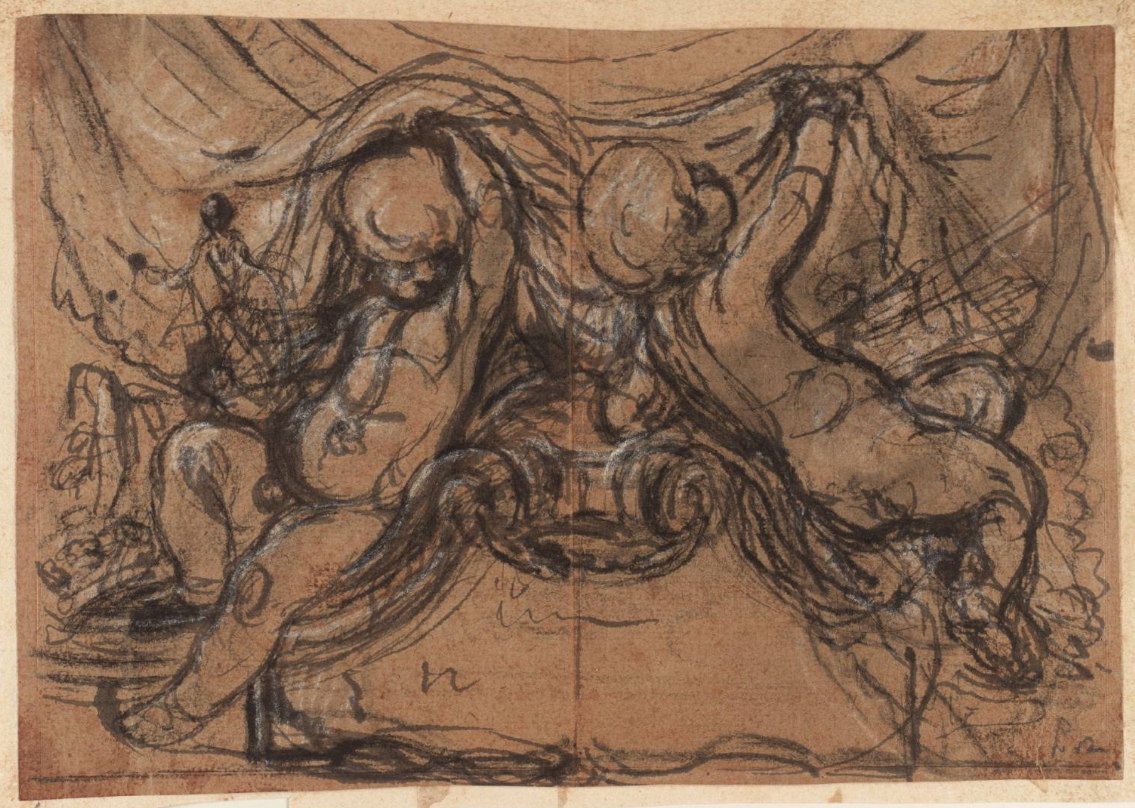HUBERT FRANÇOIS GRAVELOT (Paris 1699 – 1773 Paris)
Hubert François Gravelot (Paris 1699 – 1773 Paris)
Urania holding a pair of compasses, surrounded by Putti
Black chalk, pen and brown ink, coloured wash and some bodycolour, brown ink framing lines, partial watermark letters, 175 x 126 mm (6.9 x 5 inch)
Signed ‘H. Gravelot del.’ (lower left)
Provenance
~ Ullman Collection, France
~ Private collection, The Netherlands
***
Among the illustrators of French eighteenth-century books, Hubert-François Bourguignon, called Gravelot, occupies a prominent place.1 The Goncourts counted him among the four ‘petits grands maîtres du genre’, together with Cochin, Eisen and Moreau. He belongs to the group of vignettistes who are better known for their contribution to book illustration than for their paintings or independent drawings. The reason for this phenomenon may lie, especially in Gravelot’s case, in the charm and finesse of these small compositions and the superb draughtsmanship in the elegant, gracefully posed figures inhabiting attractive rococo interiors or disporting themselves in luxuriant gardens. These designs have been well described as true masterpieces of the genre, expressing the gaiety and effervescence of the last decades of the ancient regime.
The engraver, famous book illustrator, designer and drawing-master Hubert-François Bourguignon was born in Paris in 1699. He emigrated to London in 1732, where he quickly became a central figure in the introduction of the Rococo style in British design, which was disseminated from London in this period, through the media of book illustrations and engraved designs as well as by the examples of luxury goods in the ‘French taste’ brought down from London to provincial towns and country houses.
This very freely executed and attractively coloured drawing is a fine example of Gravelot’s draughtsmanship. It is probably a design for a painted ceiling or room decoration. Groups of drawings by Gravelot are preserved in the collections of Tate Britain in London and the Morgan Library in New York. The rather tidily written signature is typical for the artist, often accompanied by ‘del.’ (delineavit = drew) or ‘inv.’ (invenit = invented), and can for instance be compared to Gravelot’s Death of Epaminondas in the Morgan Library (fig.).2 The spontaneous handling of our sheet can for instance be compared to Gravelot’s study for the border of Houbraken’s engraved portrait of Sarah, Duchess of Marlborough, preserved in Tate Britian (fig.).3
1. For the artist, see Ruth S. Kraemer, ‘Drawings by Gravelot in the Morgan Library', Master Drawings, XX (Spring 1982), pp. 3-21.
2. Brown ink, red chalk, 139 x 79 mm, inv. no. 1986.2048.
3. Graphite, ink, 153 x 219 mm; inv. no. T08924.
